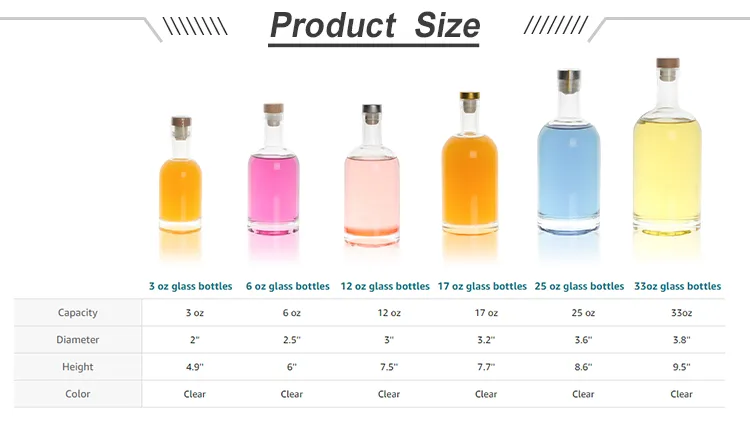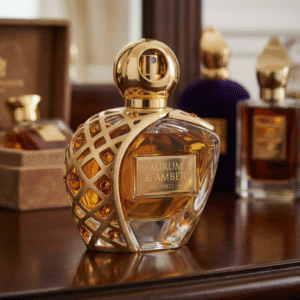In the competitive world of distilled spirits, every detail matters. From the intricate recipe of the spirit itself to the label design, brands meticulously craft their identity. However, one of the most fundamental yet often overlooked elements is the bottle’s volume. The capacity of a spirit bottle is more than just a measure of liquid; it’s a strategic tool that influences brand positioning, market reach, and consumer perception.
The choice of bottle size can dictate where a product sits on the shelf, from a premium, imposing 1-liter bottle in a duty-free shop to a charming 50ml miniature perfect for sampling. It impacts pricing strategy, logistical efficiency, and, most importantly, how a brand connects with its target audience across different cultures and occasions.
Table of Contents
1. Industry Insight: A Global Perspective on Bottle Sizes
The global spirits market is not monolithic. Regional regulations, historical traditions, and consumer habits have created a diverse landscape of preferred bottle sizes. A successful global brand must navigate these differences.
- The European Standard (700ml): In the European Union, the 700ml bottle is the standard for most spirits, including vodka, gin, and rum. This size is a result of historical EU regulations and remains the most common format across the continent. Brands targeting Europe must consider a 700ml vodka bottle or gin bottle as their primary offering.
- The American Fifth (750ml): In the United States, the 750ml bottle, historically known as a “fifth” (one-fifth of a US gallon), is the dominant size. For brands aiming to penetrate the lucrative American market, a 750ml whisky bottle or tequila bottle is essential. This size has become a de facto standard in many other parts of the world as well, thanks to the influence of American media and culture.
- The Liter and Beyond: Larger formats like 1L, 1.5L, and 1.75L are often associated with value, parties, or travel retail (duty-free). They offer a lower cost-per-ounce and make a strong statement on the shelf.
- The Rise of Miniatures (50ml): Small-format bottles are booming. They are perfect for trial packs, gift sets, minibars, and impulse buys, allowing consumers to sample a new product without committing to a full-size bottle.
As a flexible glass bottle manufacturer, we closely monitor these global spirit packaging trends to ensure our clients can adapt and thrive in any market they choose.
2. Case Study: Multi-Capacity Bottle Design for an International Whisky Brand
A renowned Scottish whisky brand approached us with a challenge. They wanted to strengthen their global presence but were constrained by a single bottle size. Their traditional 700ml bottle was successful in Europe, but they struggled to gain traction in North America and Asia.
Our solution was to develop a cohesive family of bottles that maintained the brand’s iconic silhouette across multiple capacities:
- 50ml Miniature: Designed for gift packs and airline sales, introducing the brand to new consumers.
- 700ml Primary Bottle: Continued to serve their core European market.
- 750ml US-Focused Bottle: A dedicated mold was created to meet American standards, unlocking significant growth in the US.4.
- 1L Travel Retail Edition: A premium, duty-free exclusive that boosted the brand’s prestige and visibility among international travelers.
By offering a range of sizes, the brand successfully tailored its strategy to different markets, resulting in a 40% increase in international sales within two years.

3. Solving the Client's Dilemma: How to Choose the Right Capacity
The core challenge for many brands is selecting the right bottle size for their specific spirit and target market. Here’s a simplified guide:
- For Premium & Craft Spirits (e.g., Single Malt Whisky, Artisanal Gin): A standard 700ml or 750ml bottle often works best to convey quality. Consider adding a 50ml version for tasting promotions.
- For High-Volume Spirits (e.g., Vodka, Standard Rum): Offering multiple sizes, including larger 1L or 1.75L formats, can capture a wider audience, from individual buyers to those stocking up for an event.
- For Niche Liqueurs or Aperitifs: Smaller formats like 375ml or 500ml can be less intimidating for consumers trying a new category, encouraging trial and purchase.
The key is to align the bottle size with the consumption occasion and the consumer’s purchasing power in your target region.
4. Your Partner in Custom Glass Packaging
Choosing the right bottle capacity is a critical decision, but it doesn’t have to be a difficult one. As an experienced glass bottle manufacturer with a deep understanding of the global spirit packaging landscape, we offer more than just glass; we offer guidance.
We provide flexible manufacturing solutions that allow for custom bottle capacity to perfectly match your brand’s strategy. Whether you need a standard 750ml bottle or a completely bespoke size and shape, our team is here to help you navigate the complexities of the global market.
Contact us today for a consultation on your packaging needs and let’s create a bottle that tells your brand’s story, one size at a time.
Visit www.glassypack.com or email sales@glassypack.com.




